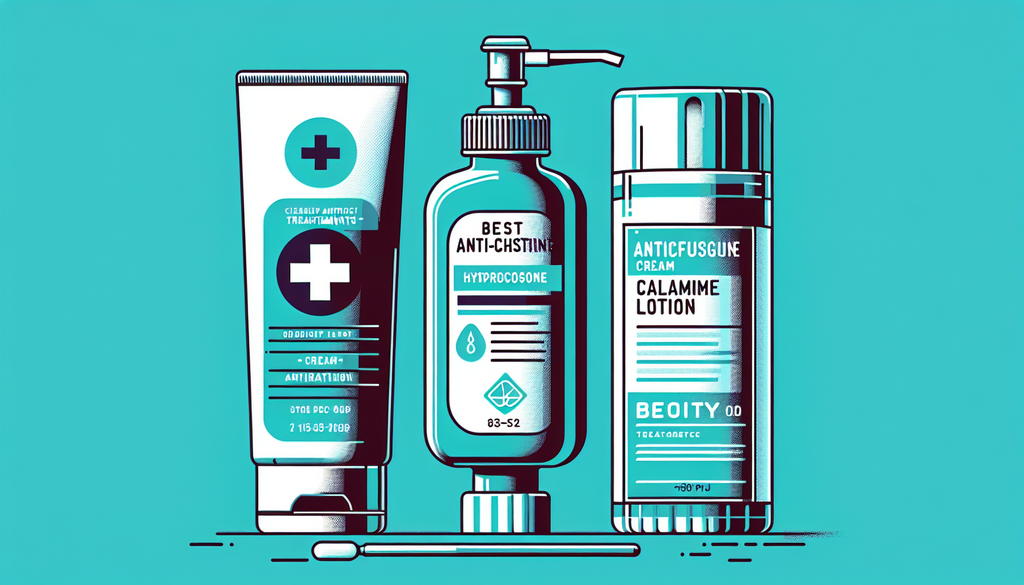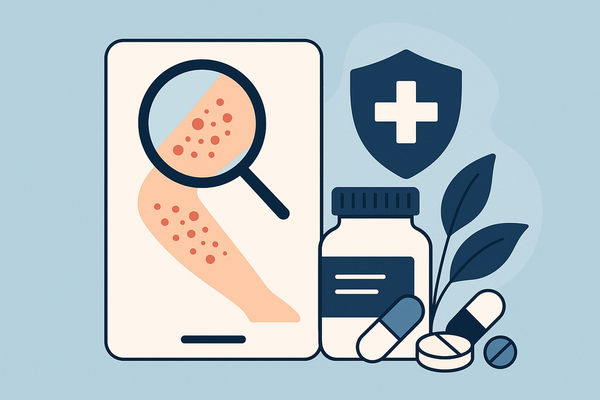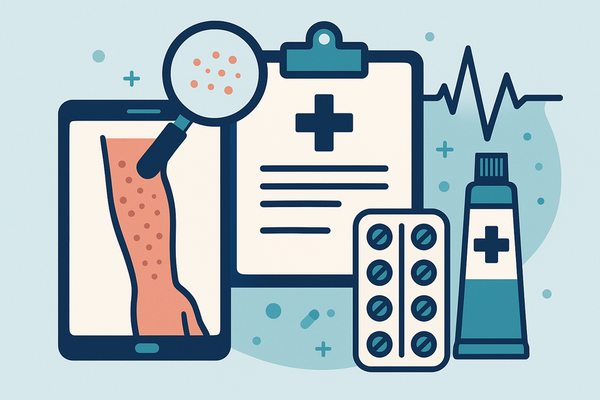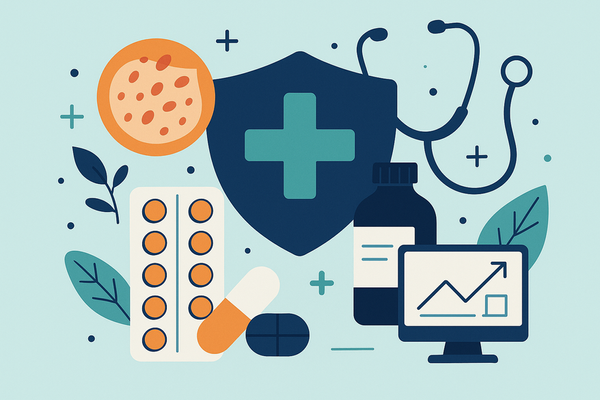Best Anti-Itch Cream: Top OTC Solutions for Instant Relief
Discover the best anti-itch cream with OTC solutions like hydrocortisone, antifungal cream, and calamine lotion for fast, effective itch relief.

Estimated reading time: 7 minutes
Key Takeaways
- Hydrocortisone 1% delivers fast relief for inflammatory rashes and insect bites.
- Antifungal creams target and eradicate fungal infections at the source.
- Calamine lotion soothes mild itches, cools the skin, and dries oozing lesions.
- Diphenhydramine and pramoxine provide rapid numbing comfort for allergic itches.
- Matching the right product to the cause ensures quicker relief with minimal side effects.
Table of Contents
- Introduction
- Understanding Itch Relief Options
- Deep Dive into Each Product Type
- Best Anti-Itch Cream
- Hydrocortisone 1% Uses
- Antifungal Cream for Rash
- Calamine Lotion for Rash
- Comparative Analysis
- Guidance for Making a Purchase Decision
- Conclusion and Call to Action
- FAQ
Introduction
The quest for the best anti-itch cream means finding fast-acting, proven OTC relief from insect bites, rashes, and allergic itches. Readers want an over-the-counter solution they can buy today for immediate comfort. The ideal product offers rapid cooling, proven efficacy, and easy accessibility.
If you’re dealing with persistent red, itchy rashes, check out our Red Itchy Rash guide for detailed identification tips.
Understanding Itch Relief Options
- Hydrocortisone 1% creams: Topical steroid lotions that reduce inflammation-driven itch and redness by blocking local inflammatory mediators.
- Antifungal cream for rash: Creams and ointments containing active fungicides to eradicate fungal infections such as athlete’s foot and ringworm.
- Calamine lotion for rash: Zinc oxide–based suspension that soothes, cools, and dries mild itches and oozing lesions.
- Other anti-itch creams (diphenhydramine, pramoxine): Antihistamine or anesthetic formulas that numb the skin and block itch signals.
Why it matters: Matching the right product to the root cause of the itch ensures faster relief, fewer side effects, and a quicker return to comfort.
Deep Dive into Each Product Type
Best Anti-Itch Cream
An anti-itch cream is a topical formula combining rapid cooling, targeted active ingredients, and a skin-friendly base. These lotions are designed for immediate comfort while nourishing the skin barrier.
Top Active Ingredients:
- Hydrocortisone 1% (corticosteroid): Reduces inflammation, redness, and itch in eczema, psoriasis, and insect bites. Brands include Cortizone-10 Sensitive Skin and Aveeno Maximum Strength.
- Diphenhydramine 2% (Benadryl Cream): An antihistamine that blocks histamine release, offering relief from allergic itch, hives, and bug bites.
- Pramoxine 1% (CeraVe Itch Relief Cream): A topical anesthetic that numbs the area, providing hours of itch relief with a ceramide-rich moisturizing base.
“Users report relief within 5 minutes and comfortable wear under clothing—no greasiness or rubbing off.”
Hydrocortisone 1% Uses
Hydrocortisone 1% is a mild topical corticosteroid that blocks inflammatory pathways at the site of irritation, reducing redness and itch.
Indications:
- Eczema and psoriasis flare-ups
- Insect bites, minor allergic skin reactions, and irritant contact dermatitis
- Reducing inflammation after sunburn or mild burns
Usage Guidelines:
- Apply a thin layer 3–4 times daily to clean, dry skin.
- Suitable for adults and children over 2 years old.
- Do not use for more than 7 days on the same area without physician consultation.
- Avoid occlusive dressings unless directed by a doctor.
Sensitive Skin Note: Choose fragrance-free, hypoallergenic formulas to minimize irritation and allergic contact dermatitis.
Antifungal Cream for Rash
Use an antifungal cream when you see persistent, ring-shaped, or scaly rashes indicating a fungal infection (e.g., athlete’s foot, ringworm). These topical treatments eradicate the underlying pathogen rather than just masking symptoms.
Active Ingredients:
- Clotrimazole (Lotrimin Ultra)
- Miconazole (Micatin)
- Terbinafine (Lamisil AT)
Application Protocol:
- Clean and dry the affected area thoroughly.
- Apply a thin layer twice daily for 2–4 weeks, even if symptoms clear sooner.
- Continue treatment for at least one week after the rash appears gone to prevent recurrence.
Caution: Do not use antifungal creams on non-fungal rashes—doing so can worsen conditions that respond to steroids or antihistamines.
For more on fungal rash signs and treatment, see our fungal rash guide.
Calamine Lotion for Rash
Calamine lotion is a suspension of zinc oxide and ferric oxide that soothes, cools, and dries oozing skin lesions.
Best For:
- Poison ivy, oak, and sumac rashes
- Chickenpox and mild viral exanthems
- Insect bites and mild allergic itches
Usage Notes:
- Shake well before use.
- Apply with a cotton pad as needed, up to four times daily.
- Gentle enough for all ages, including infants.
Calamine lotion is milder than steroids and antihistamines, making it ideal when you want a gentle, non-pharmacologic approach with minimal side effects.
Comparative Analysis
When choosing an OTC rash cream, weigh active ingredients, best uses, application frequency, price, and side effects:
- Hydrocortisone 1%: Best for inflammatory rashes and bites; 3–4×/day; $6–$12; fast-acting.
- Antifungal Cream: Best for fungal rashes; 2×/day; $8–$15; cures infection.
- Calamine Lotion: Best for mild itches; as needed; $4–$8; gentle, dries weeping skin.
- Diphenhydramine Cream: Best for allergic reactions; as needed; $5–$10; cooling antihistamine.
- Pramoxine Cream: Best for sensitive skin; as needed; $7–$12; long-lasting numbing.
Guidance for Making a Purchase Decision
-
Identify the Cause
- Red, inflamed rash → Hydrocortisone 1%
- Ring-shaped, scaly rash → Antifungal cream
- Mild, widespread itch → Calamine lotion or Diphenhydramine cream
-
Consider Skin Type
- Sensitive → Choose fragrance-free, hypoallergenic formulas (e.g., Cortizone-10 Sensitive Skin).
-
Follow Usage Instructions Exactly
- Note max duration for steroids (7 days per area).
-
Read Consumer Reviews
- Aveeno, Cortizone-10, and Benadryl often receive high marks for efficacy and tolerability.
-
Purchase Options
- Local pharmacies: Walgreens, CVS
- Online retailers: Amazon via brand sites
- Trusted brands: Aveeno, Cortizone-10, CeraVe, Benadryl
For personalized rash insights, try Rash Detector—upload images and get an instant analysis in seconds.

Conclusion and Call to Action
Choosing the best anti-itch cream means matching your symptoms to the right active ingredient: steroids for inflammation, antifungals for fungal rashes, and calamine for mild itching. Consider your skin type and follow label directions for safe, fast relief. Shop these proven OTC creams & lotions now—find your relief at major retailers like Walgreens, CVS, and Amazon.
FAQ
Which anti-itch cream works fastest?
Hydrocortisone 1% and pramoxine formulations often provide relief within minutes. Pairing a cooling ingredient with a numbing agent speeds comfort.
Can I use hydrocortisone cream on children?
Yes, hydrocortisone 1% is suitable for children over 2 years old. Limit use to 7 days on any one area and consult a pediatrician for prolonged symptoms.
How long should I treat a fungal rash?
Apply antifungal cream twice daily for 2–4 weeks, and continue for at least one week after symptoms resolve to prevent recurrence.
Is calamine lotion safe for infants?
Calamine lotion is gentle enough for all ages, including infants. Shake well and apply up to four times daily to soothe mild itches and rashes.





